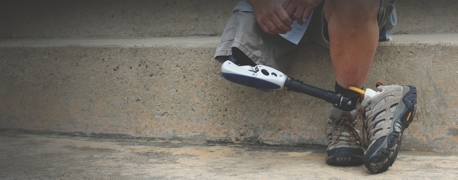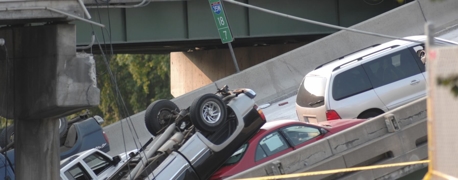Mobile Homes in Tornado-Prone Areas: What Parents Need to Know

About 20.6 million Americans already live in mobile or manufactured homes, and that number is only likely to grow ever higher as more and more mobile homes are being built. As they are faster to construct than permanent, traditional structures, manufactured homes are viewed as a vital measure to help alleviate the housing crisis.
While federal regulations for mobile home safety have been in place for decades, and many states have their own safety codes when it comes to installing manufactured homes, these safety codes aren’t backed by reliable enforcement measures. This means that potentially millions of people are living in manufactured homes that are unsafe to an illegal degree.
In Tornado Alley and parts of the southeastern U.S., this shoddy installation work can translate to significantly higher risks of injury and death during high winds and tornados. By knowing their rights and how to assert them, however, residents of manufactured homes—parents included—can be better prepared before a disaster strikes, despite government, manufacturer, and installer failures.
Manufactured Homes Face a Disproportionate Risk During Tornados
According to a study by Villanova University and Northern Illinois University researchers, manufactured homes account for just about 6% of the housing in the U.S., but they are home to more than half of all tornado fatalities that occur inside buildings, homes, and other structures. Specifically, “54% of all housing-related tornado deaths from 1985 to 2017” involved manufactured homes.
While improvements in legislation and manufacturing practices should have lowered this rate over time, tragically, that has not been the case. Manufactured homes are just as vulnerable as ever in the face of high winds. It's been determined that people in a manufactured home are 15-20% likelier to be killed during a tornado compared to those in a permanent home.
For example, in March of 2019, 19 of the 23 tornado deaths occurred inside of manufactured homes. After an investigation, each of these mobile homes was found to be in violation of state code. These manufactured homes didn’t have ground anchors at all, had anchors that were deteriorating, or what anchor system was in place fell short of Alabama safety codes. This was the case even though most of those homes were built after 2000, and all of them were constructed after key federal legislation from 1974, which could have ensured better tie-down systems.
Per the National Oceanic and Atmospheric Administration (NOAA) , no less than 45 of 74 deaths from tornados by from the start of 2023 to mid-2023 involved mobile homes.
A Failure to Enforce Safety Codes for Manufactured Homes
Certain laws and building codes have been in place for decades that should have ensured that manufactured homes provide as much stability and shelter as a permanent home. There are multiple ways to do this, and none that are specifically mandated, but there are a few prevalent methods to secure a manufactured home during high winds.
Manufactured homes should be properly installed with things like:
- Concrete foundations
- Tie-down systems for tornado and hurricane winds
- Anchor bolts, undamaged, well-installed in the ground
Specifically, in 1974, Congress passed the Manufactured Housing and Construction Safety Standards Act. This is a foundational law that stated manufactured homes needed to be built up to the same safety standards that are expected of traditional homes. In other words, manufactured homes should be as stable as permanent homes in high winds up to the 112-mile-per-hour winds of an F-1 tornado. Yet many manufactured homes get demolished or swept up by winds far lower than that standard.
In 1987 and 1997, the U.S. Department of Housing and Urban Development (HUD) ran audits of the manufactured home industry to see how many companies complied with the 1974 act. In each audit, the industry as a whole was found to fall below these safety standards.
On page 6 of its final report in 1994, the National Commission on Manufactured Housing stated that the HUD was responsible for updating and enforcing its own regulations for manufactured homes. The report also said that the “HUD has not done either properly”, due to bureaucracy and a lack of resources. The report also accused the HUD of not regulating the installation of manufactured homes, where much of a structure’s vulnerability stems from.
In 2019, Texas’ State Auditor’s Office uncovered “significant weaknesses in its oversight of installation inspections” when determining if the Manufactured Housing Division was doing its job. The division didn’t even have procedures laid out on how to determine if an installation was inspected or not and whether this information was accurate in their system.
One of the authors of the study first mentioned, Stephen M. Strader, told the Associated Press that proven safety measures are being ignored: “Anchoring matters and has been shown to be the difference between life or death. However, the [manufactured home] industry seems disinterested in addressing this because it would make their homes more expensive.”
Whether we zoom out and look at the big picture or look closer at specific instances, there is a consistent pattern of people not being able to rely on the safety codes that are already in place for their manufactured homes. With constant lapses in enforcing safety codes, what can a family do to make sure that their home is code-compliant and to stay safe during a tornado?
Finding Out If Your Manufactured Home Is Up to Safety Codes
If wind reaches 86 to 110 miles per hour and a manufactured home is not properly secured, the wind can flip the home over, carry it away, or rip it to shreds. If a manufactured home is not properly tied down and secure, even a high windstorm that isn’t as powerful as an F-1 tornado can lift the entire home and fling it far away, cause it to tumble or wreak other kinds of havoc that injures or kills the home’s occupants.
So, how can you determine ahead of time that your manufactured home is up to code? First, you can look at your sales documents to see if there is a tie-down disclosure. If there isn’t, then you can assume that your home doesn’t have the proper tie-down system. If there is such a disclosure, request a copy of it right away.
In either case, you can start by inspecting your home yourself. Even if you have a tie-down disclosure in hand, it doesn’t hurt to double check. You can check out the underside of your home and decide visually if it looks like there are enough tie-downs to keep the home secure during forceful winds. You can look to see if the anchors are tight and not corroded or damaged in some other way.
Then, to verify whether your manufactured home has a sufficient tie-down system, you can:
- Reach your local building department to find out how many tie-downs are needed for your home.
- See what the manufacturer guidelines say about strap tension and your home’s anchoring system.
- Examine the straps tying your home down to see that they’re tight and straight, not bent, warped, or corroded.
- Watch out for any corrosion or wear and tear on the ground anchors.
If you see any damage, getting the damaged pieces replaced can help you recover some peace of mind.
If you don’t want to just depend on your own personal inspection, you can also get an engineer to provide you with a report. A professional site inspection and calculation can help you know for certain if your manufactured home has an adequate tie-down system.
Tornado Safety Tips If You’re in a Manufactured Home
Unfortunately, when it comes to finding a place to shelter during a tornado, manufactured homes are among the worst option, up there with vehicles and highway overpasses. Sheltering in a mobile home is a last resort, so it is generally preferable to move to a safer location and get as many walls between you and the outdoors as possible.
For manufactured home safety during a tornado, NOOA recommends:
- Staying informed of weather conditions: Whether it’s local news, the radio, or wireless emergency alerts, you can keep yourself and your family informed via multiple sources, including signing up for wireless emergency alerts (WEA) from the National Weather Service, tuning into your local NOAA weather radio, or frequently checking regional news outlets. While government agencies should provide reliable information, they are not always dependable.
- Being ready to evacuate: This can mean drawing up a plan to get to a shelter or somewhere else safer than a manufactured home. As severe weather warnings roll in, you should fill your car with enough gas to get out of the area well ahead of time, or, if possible, reach out to someone to provide transportation for you.
- If it’s too late to get to a proper shelter: It may be better to pick a somewhat shielded area outside to keep away from debris or floods. It is often safer to get your family outside, find a low-lying area to lie down in, and cover your heads.
Of course, there are times when there simply isn’t enough notice to react to a tornado warning, much less get to a safer site. If you find yourself in a manufactured home during a tornado, by law, it ought to be as safe as staying in a site-built traditional home—even in the face of an F-1 tornado. Unfortunately, this is not always the case, so proper preparation, such as ensuring your mobile home meets applicable safety codes, is key.
Issues with Tornado Warnings to Manufactured Home Residents
While government agencies recommend evacuating a manufactured home and moving to a safer structure during a tornado, there are multiple problems with that recommendation. First, there is too often a lack of warning systems that are both reliable and timely enough. There are many false alarms, and when a real warning comes through, there is often very little time to respond.
Secondly, not everyone has access to a sturdier shelter, and certainly not within the narrow windows of time given by last-minute tornado warnings. There are, on average, just 13 minutes after a warning is issued before a tornado strikes, according to the American Meteorological Society journal Weather, Climate, and Society. And if, for instance, a tornado strikes during the night, many people will wake up to the tornado already being upon them.
Building codes exist for a reason, and more people would be alive today if those building codes were followed and upheld for manufactured homes.
Safer Manufactured Homes Are Possible—and Necessary
There are no guarantees when it comes to tornadoes. The devastation they visit upon communities and the paths they take are highly unpredictable. Within certain parameters, however, that is, lower levels of wind force, we do know which measures can be taken to keep manufactured homes standing and in one piece. While it shouldn’t be up to parents to make sure that a manufactured home is installed properly, you do have the knowledge and tools available to you to take those steps toward a safer home for yourself and your loved ones.


